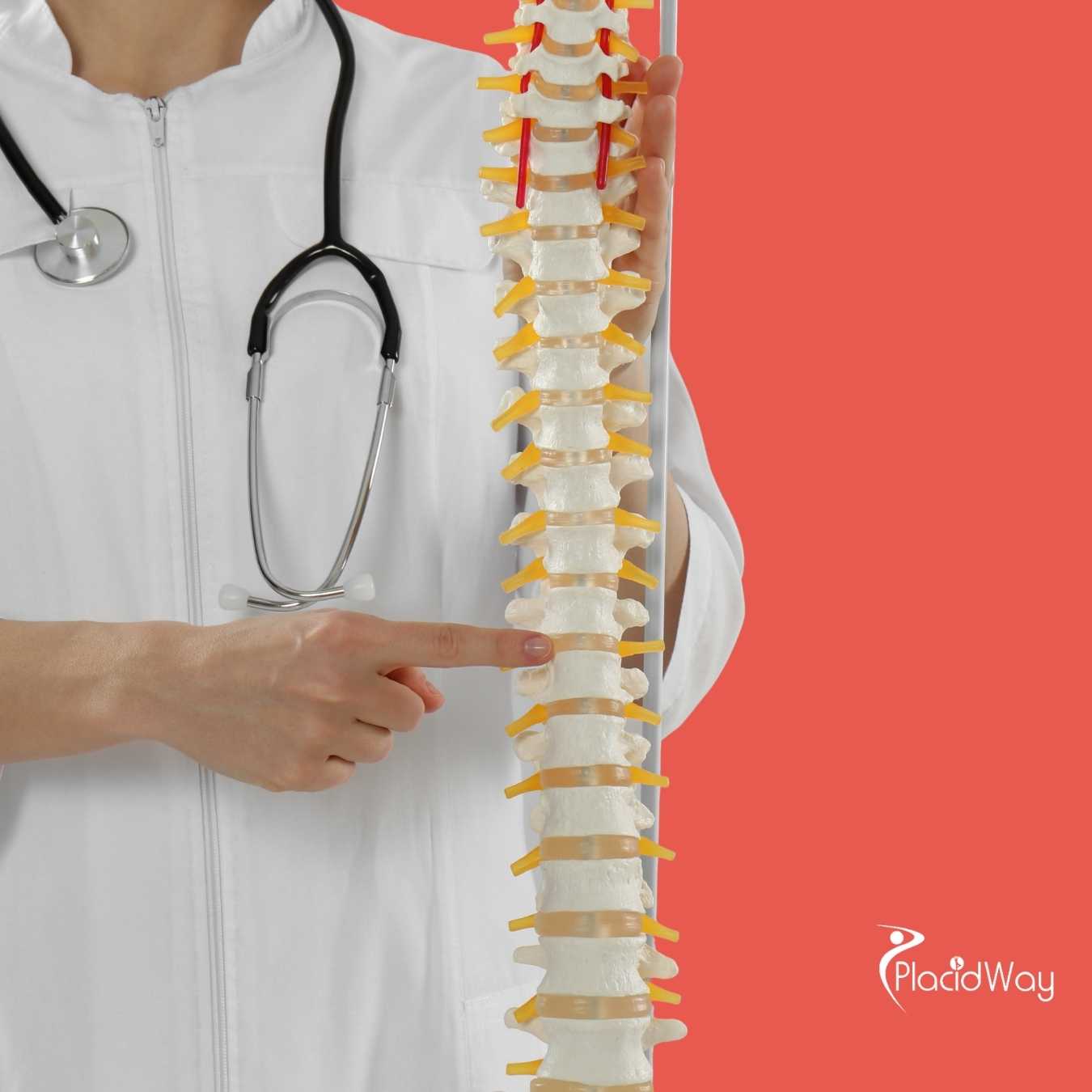Exploring the Potential of Stem Cells in Treating Cerebral Palsy
Living with cerebral palsy (CP) presents unique challenges, primarily affecting movement and muscle coordination due to brain damage that occurs before or during birth, or in early childhood. Families and individuals often seek out the most advanced and promising treatments to improve quality of life and functional independence. In recent years, stem cell therapy has emerged as a fascinating and hopeful area of research, prompting many to wonder: can stem cells truly repair the damage associated with cerebral palsy?
The concept of using the body's own regenerative potential to address neurological conditions is incredibly appealing. While it's crucial to understand that stem cell therapy for cerebral palsy is an evolving field, not yet a standard cure, current research indicates a significant potential for mitigating some of the condition's effects. These remarkable cells possess the ability to differentiate into various cell types, replace damaged tissue, reduce inflammation, and promote new neural connections, offering a glimmer of hope for individuals affected by this complex disorder. Let's delve deeper into what stem cells are, how they might help, and what the current scientific landscape reveals.
What is cerebral palsy?
Cerebral palsy (CP) is the most common motor disability in childhood, affecting millions globally. It's not a single disease but rather an umbrella term for a range of neurological conditions that primarily affect movement and muscle coordination. The damage to the brain that causes CP is non-progressive, meaning it doesn't worsen over time, but its effects on the body can change as a child grows. This damage can occur during pregnancy, childbirth, or within the first few years of life.
The symptoms of cerebral palsy vary widely among individuals, depending on the severity and location of the brain damage. Common signs include muscle stiffness (spasticity), involuntary movements, balance issues, and problems with fine motor skills. While CP primarily impacts motor functions, it can also be associated with other conditions such as intellectual disabilities, vision and hearing problems, and epilepsy. Understanding the nature of CP is the first step in exploring potential therapeutic interventions like stem cell therapy.
How do stem cells work in the context of cerebral palsy?
The therapeutic potential of stem cells in conditions like cerebral palsy lies in their unique properties. These cells are undifferentiated, meaning they have the ability to develop into many different cell types. More importantly, they possess regenerative capabilities that can influence the damaged brain environment in several beneficial ways.
When administered, stem cells can exert their effects through various mechanisms:
- Neuroprotection: They release growth factors and cytokines that protect existing neurons from further damage.
- Neurogenesis/Neurorepair: Some types of stem cells can differentiate into neural cells, potentially replacing damaged brain cells or aiding in the formation of new neural pathways.
- Immunomodulation and Anti-inflammation: They can modulate the immune system and reduce inflammation in the brain, which is often a contributing factor to ongoing damage after the initial injury.
- Angiogenesis: Stem cells can promote the formation of new blood vessels, improving blood flow and oxygen supply to affected brain areas.
These combined effects aim to create a more supportive environment for brain repair and function, potentially leading to improvements in motor skills, cognitive function, and overall quality of life for individuals with cerebral palsy.
What types of stem cells are used for cerebral palsy treatment?
Several types of stem cells are being explored for their therapeutic applications in cerebral palsy, each with distinct characteristics and potential advantages:
- Mesenchymal Stem Cells (MSCs): These are multipotent stromal cells that can differentiate into a variety of cell types, including bone, cartilage, muscle, and fat cells. MSCs are highly favored in research for CP due to their strong immunomodulatory and anti-inflammatory properties, as well as their ability to secrete growth factors that support tissue repair.
- Sources: MSCs can be isolated from bone marrow, adipose (fat) tissue, and most notably, the umbilical cord tissue (known as umbilical cord mesenchymal stem cells or UC-MSCs). UC-MSCs are often preferred because they are ethically sourced, readily available, and less immunogenic, meaning they are less likely to be rejected by the recipient's immune system.
- Hematopoietic Stem Cells (HSCs): These cells are typically found in bone marrow and umbilical cord blood and are responsible for generating all types of blood cells. While primarily known for treating blood disorders, cord blood-derived HSCs have also shown promise in neurological conditions due to their neuroprotective effects and ability to modulate inflammation.
The choice of stem cell type often depends on the specific treatment protocol, the patient's condition, and the research focus of the clinic or trial. Research continues to evaluate the efficacy and safety of these different cell types in improving outcomes for cerebral palsy patients.
Is stem cell therapy for cerebral palsy approved?
It is crucial to understand the current regulatory status of stem cell therapy for cerebral palsy. In most countries, including the United States, Europe, and Canada, stem cell therapy for cerebral palsy is not yet a standard, approved medical treatment. Regulatory bodies such as the U.S. Food and Drug Administration (FDA) classify most stem cell treatments as investigational drugs, requiring rigorous clinical trials to prove their safety and efficacy before widespread approval.
This means that while numerous clinical trials are underway globally, offering potential avenues for patients to access these therapies under controlled research settings, commercial clinics offering unproven stem cell treatments outside of these trials may not adhere to the same stringent safety and efficacy standards. Patients and families considering such therapies should exercise caution, thoroughly research the clinic, and prioritize treatments conducted within approved clinical trial frameworks or in regions with robust regulatory oversight. The lack of widespread approval highlights the ongoing need for more definitive scientific evidence.
What are the potential benefits of stem cell therapy for cerebral palsy?
While still experimental, early research and clinical observations have suggested several promising areas where stem cell therapy might offer benefits to individuals with cerebral palsy. These potential improvements are often attributed to the regenerative and neuroprotective effects of the administered cells.
Reported benefits from various studies and patient experiences include:
- Improved Motor Function: Patients may experience reduced muscle stiffness (spasticity), better balance, enhanced coordination, and greater control over voluntary movements, which can translate into improved walking, sitting, and reaching abilities.
- Cognitive and Speech Enhancement: Some individuals have shown improvements in cognitive processing, attention span, and language skills, leading to clearer communication and better engagement in daily activities.
- Sensory and Behavioral Improvements: There have been anecdotal reports of enhanced sensory perception and positive changes in behavior, including reduced irritability or improved social interaction.
It is important to manage expectations, as the degree of improvement can vary significantly among individuals, and not everyone responds to therapy in the same way. The goal is often to achieve functional gains that can significantly improve the patient's daily living and independence.
What are the risks and side effects of stem cell treatment for cerebral palsy?
As with any medical intervention, especially those still under investigation, stem cell therapy for cerebral palsy carries potential risks and side effects. Understanding these is crucial for making informed decisions.
Potential risks and side effects include:
- Infection: Any procedure involving injections or infusions carries a risk of infection, either at the site of administration or systemically.
- Immune Reaction: Even with autologous (patient's own) or immunologically matched cells, there is a possibility of an immune response, ranging from mild allergic reactions to more severe rejection, although this is less common with certain types of MSCs.
- Tumor Formation (Teratomas): While rare, especially with adult-derived MSCs, pluripotent stem cells have a theoretical risk of forming tumors called teratomas if not properly differentiated before administration.
- Adverse Neurological Events: Depending on the method of delivery (e.g., intrathecal injections into the spinal fluid), there can be risks such as headache, nausea, or more serious neurological complications, though these are rare in reputable settings.
- Transmission of Disease: If cells are sourced from a donor, there's a minimal risk of transmitting infectious diseases if proper screening protocols are not rigorously followed.
The safety profile of stem cell therapy is continuously being evaluated through clinical trials. Patients should ensure that any clinic providing treatment adheres to strict safety guidelines and provides comprehensive information about potential risks.
How much does stem cell therapy for cerebral palsy cost abroad?
For many families, the prospect of stem cell therapy for cerebral palsy leads them to consider treatment options in other countries, often driven by the experimental status or high costs in their home country. The price of stem cell therapy abroad can vary widely based on several factors, making it challenging to provide an exact figure. However, a general range can be estimated.
Factors influencing the cost:
- Country and Clinic: Different countries have varying healthcare costs and regulatory environments. Clinics in destinations like Mexico, Panama, India, or China often offer treatments at different price points compared to highly regulated regions. The reputation and experience of the specific clinic also play a role.
- Type and Source of Stem Cells: Whether the cells are autologous (from the patient) or allogeneic (from a donor), and their source (e.g., umbilical cord, bone marrow, adipose tissue), can impact the cost due to extraction and processing complexities.
- Number of Treatment Cycles: Many protocols involve multiple infusions or injections over a period, and the total cost will depend on the number of cycles recommended for the patient.
- Adjunct Therapies and Services: The overall package often includes more than just the cell infusion. It might cover pre-treatment evaluations, post-treatment rehabilitation, follow-up care, accommodation, and translation services.
Families considering medical tourism for stem cell therapy for cerebral palsy should request a detailed breakdown of costs, understand what is included, and inquire about any hidden fees to make an informed financial decision.
What should I look for when considering stem cell therapy for cerebral palsy in another country?
Navigating the options for stem cell therapy for cerebral palsy abroad requires thorough research and due diligence to ensure safety and quality. Here are key aspects to consider:
- Accreditation and Regulation: Verify if the clinic is accredited by reputable international or national bodies and operates under clear regulatory oversight for stem cell treatments. This ensures adherence to safety and quality standards.
- Medical Team Expertise: Research the qualifications and experience of the doctors and medical staff. They should have specialized knowledge in neurology, pediatrics, and stem cell biology, specifically related to cerebral palsy.
- Treatment Protocols: Understand the exact type of stem cells used, their source, processing methods, dosage, and delivery method. The clinic should provide a clear, evidence-based rationale for their specific protocol.
- Transparency and Ethics: A reputable clinic will be transparent about the potential benefits, risks, costs, and the experimental nature of the treatment. Be wary of clinics that promise cures or offer vague information.
- Patient Safety and Follow-up Care: Inquire about their patient safety record, emergency procedures, and what kind of follow-up care and rehabilitation support is provided after the treatment.
- Patient Testimonials and Reviews: While not definitive proof, real patient testimonials and independent reviews can offer insights into the experiences of others.
Thorough preparation and asking critical questions can help families make a well-informed decision when exploring stem cell therapy for cerebral palsy internationally.
Are there clinical trials for stem cell therapy for cerebral palsy?
The scientific community recognizes the potential of stem cells in addressing conditions like cerebral palsy, leading to a significant number of ongoing clinical trials worldwide. These trials are essential for systematically evaluating the safety, optimal dosage, and efficacy of different stem cell therapies.
Researchers are exploring various facets of treatment within these trials, including:
- Different sources of stem cellss uch as umbilical cord blood, umbilical cord tissue, bone marrow, and adipose tissue.
- Various methods of cell delivery, including intravenous (IV) infusions, intrathecal injections (into the spinal fluid), and direct injections into specific brain regions.
- Studying the effects on different types of cerebral palsy and varying severities.
- Measuring a wide range of outcomes, from motor function improvements and spasticity reduction to cognitive and behavioral changes.
Patients and families interested in participating in these trials can often find information on global databases like ClinicalTrials.gov. Involvement in a well-regulated clinical trial offers the opportunity to access cutting-edge treatments under strict medical supervision and contribute to the scientific understanding of stem cell therapy for cerebral palsy.
What does the future hold for stem cell therapy and cerebral palsy?
The field of stem cell therapy is rapidly advancing, and its potential for cerebral palsy continues to be a major focus of scientific inquiry. The future holds exciting possibilities as researchers gain a deeper understanding of stem cell biology and their interaction with neurological conditions.
Key areas of development include:
- Refined Protocols: Ongoing trials are optimizing factors like cell dosage, timing of administration, and delivery methods to maximize therapeutic benefits while minimizing risks.
- Combination Therapies: The future may involve combining stem cell therapy with other interventions, such as intensive rehabilitation, gene therapy, or pharmacotherapy, to achieve synergistic effects.
- Personalized Medicine: Advances in genetic profiling and cell manufacturing could lead to more personalized stem cell treatments tailored to an individual patient's specific type of cerebral palsy and genetic makeup.
- Enhanced Cell Efficacy: Research into genetic modification of stem cells aims to enhance their neuroprotective, anti-inflammatory, or regenerative capabilities before transplantation.
While definitive answers regarding a "cure" for cerebral palsy through stem cells are still years away, the trajectory of research suggests that these therapies will play an increasingly significant role in improving the lives of those affected by the condition, offering more effective and targeted treatment options.
Considering exploring advanced medical treatments like stem cell therapy for cerebral palsy or other complex conditions? PlacidWay connects you with world-class clinics and specialized care providers globally, ensuring you find safe, high-quality, and affordable treatment options. Visit PlacidWay to learn more about medical tourism opportunities and find the right solution for your healthcare needs.

.png)

.png)









Share this listing